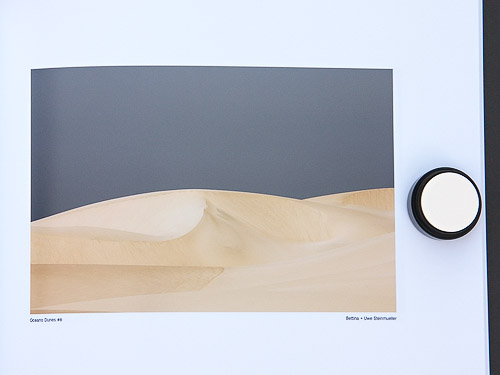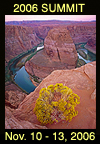We are struggling for quite a time how to talk and
judge the existence of OBA (Optical Brightening Agents). It is certain
that:
- OBA fade (especially under UV light)
- Not all papers with OBA fade at the same speed (own tests and tests
by other sources)
- Bright white papers with allowing high contrast need OBA
- OBA can be applied to the coating or the paper
- Some papers use more OBAs than others (means the difference between
the paper with and without OBAs can vary)
A press release we received today by Hahnemuehle
USA on this issue is the reason to
write this note as we think they have a point. What we write here is
our opinion and not influenced by this press release but still we
think the press release is not that off the mark. Here are some quotes
from this press release that we would like to comment on.
Note: During our conversion of the press release
to PDF we lost the link to "Library of Congress Standard for Permanent
Paper" "OBAs are white or colorless compounds
that work by converting ultraviolet light into visible light, thereby
making the paper appear brighter or whiter. They do not change the
color of the paper; they only fool the eye into seeing a whiter color.
After being exposed to UV rays for a long period of time, OBAs will
begin to lose their fluorescent quality, leaving only the natural
base color."
This seems to be an accurate description on
what OBA are and what they do. Because they all fade probably faster
than the papers fade (yellow) it is better to use papers without
OBAs. But there is a big if: If you want to accept the natural slightly
yellow of papers without any OBAs. This is a pure artistic and pragmatic
decision.
"So the claim that OBAs cause paper to yellow
or reduce its permanence is simply wrong. Eventually, the perceived
color of the paper will revert to the same base color as papers without;
but initially, OBAs allow a much brighter base. It is not yet known
how long the reversion to natural might take. We do know that it
is not an immediate thing; it could take as many as 50 years (even
longer if the artist takes measures to protect the image from the
effects of UV rays.) But the point to remember is that the paper
will end
up the same color as it would have if OBAs were
not used."
This is a point that only scientists can verify. The question is whether
there is a side effect of OBAs besides just fading away over time.
"Consider that virtually all silver halide papers used in darkroom
photography contained OBAs. Artists who wanted a bright white base
simply accepted the fact that there would be a slight change over a
long period of time. In fact, many photographers and collectors find
this “mature” look desirable. At Hahnemühle,
we strongly feel that to provide the paper base color and print color
where the artist wants it for their lifetime is better than having
it wrong from the beginning."
We always suspected that classic silver halide papers also contained
quite a bit of OBAs. In the art world this seems to be accepted. The
real question is how fast the papers with OBA will yellow and how bad
the photos will look if they get back to the natural base color of
the papers.
Note: "Yellow" in this context means that the paper
looks relatively more yellow (or warm) when the OBAs are gone compared
to the paper with OBAs present. This is an entirely different effect
than
the yellowing of the paper substrate itself Conclusion
If you find that natural papers without
OBAs work for your images then this would be a safe bet. Otherwise
live with the fact that your
papers will yellow over time (and some seem to do this faster than
others). You as the photographer have the choice to use papers with
and without OBAs. There is no silver bullet. We find the press release by Hahnemuehle very helpful because it
opens up a more useful discussion on OBAs.
6/20/2006 Visualize OBAs
with the BabelColor White Target
When we first published this article we became aware
of this excellent paper "How
to use a white Target to identify UV-enhanced paper" by
BabelColor. In the meantime we got the BabelColor White Target and
used it in the following test shot:

BabelColor White Target
Check the image and you find the following:
- The white on the target is pretty neutral
- The target seems to look yellow because the paper used in this
paper contains quite strong OBAs which make the paper look more
blue (there are many papers out there with this characteristics).
The Babel Color White Target is a useful tool to evaluate papers
for OBAs. There are many more applications where a maximum white
target
comes
in
handy: controlling the exposure for bright highlights and performing
white balance for
digital
images.
Please share your opinion in our printing news group.
Resources
"How
to use a white Target to identify UV-enhanced paper" by BabelColor Comments
Juergen
Gulbins "Paradox: If you protect
the paper against UV using UV filtering glass then at the same
time you also minimize the effect of the OBAs." (6/6/2006)
From our forums (6/6/2006)
"OBAs are a major problem with paper/printer profiling."
From comments at "The
Online Photographer" (6/6/2006)
Because different light sources have a different intensity
of UV prints may also show more metamerism.
Note by George Barr on his blog (6/7/2006)

This is one of the many techniques we will teach during the 2006 Summit.
We will also work with you 1 on 1 and help you with your own images
and with how to use this technique, and many others, in your own work. Click
here to read a detailed description of the 2006 Digital
Fine Art Summit. Joseph Holmes will join the Summit 2006 as a guest
instructor means you can ask this world class printing expert directly.
About the Fourth Annual Photography & Fine Art
Printing Summit
The 4th Photography & Fine Art Printing Summit will take place
November 10th to 13th, 2006, in Page, Arizona. Seats are limited. In
addition to studying color management and color spaces, we will also
do field photography in stunning locations such as Antelope Canyon,
Lake Powell and Horseshoe Bend, as well as study Raw conversion, Photoshop
processing, image optimization, printing. We will also conduct print
reviews of your work created during the Summit. Find out all the details
of this unique learning and photographing opportunity on the 2006 Summit
page. |